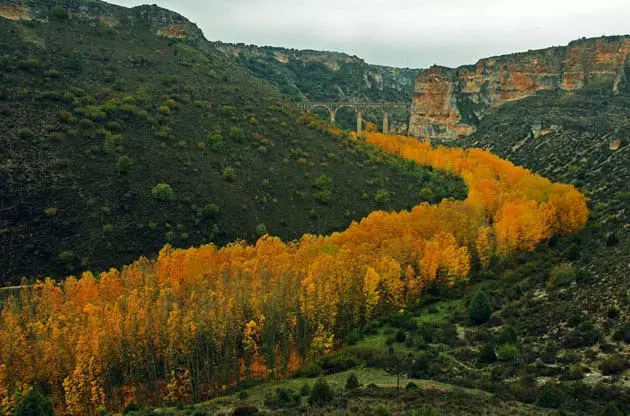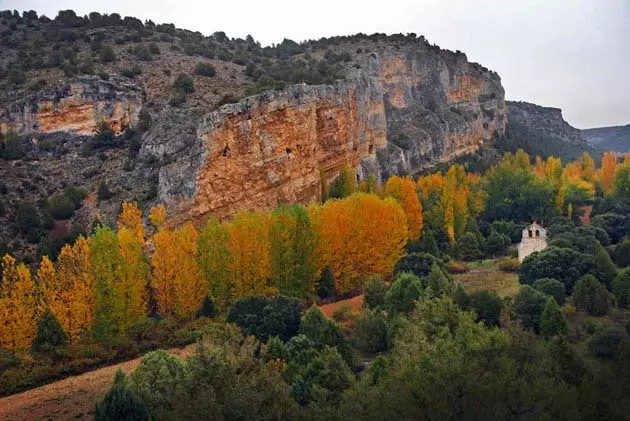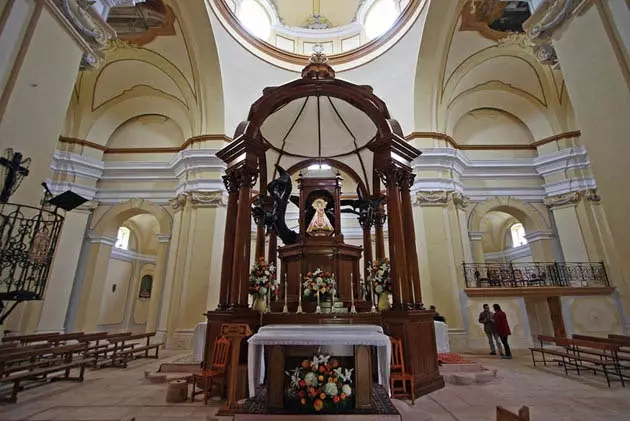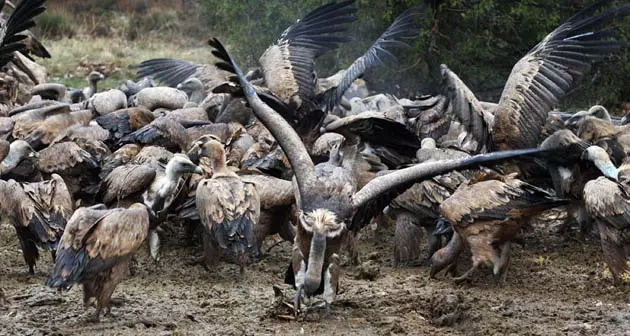
The northeast of Segovia: 100% instagrammable
This is something like the vermouth before eating. Buitrago de Lozoya , next to the N-I, the town that you leave on the right when you are going at full speed towards Burgos and have not yet started to climb Somosierra. The one with the castle and the wall. Do you know someone who has stopped there on occasion? No. Well, some of the same yes. The fact is that it has one of the coolest and most adorable art museums south of the Ebro: the Eugenio Arias-Museo Picasso Collection.
This Arias was a hairdresser born in Buitrago, a little red, who went to France after the Civil War and there he met Picasso. They became friends, so good that Picasso granted Arias the privilege of shearing his hair until the end of his days. Arias left him short on the sides, long on top and then kissed the cubist gentleman's bald head. They never exchanged pasta: Picasso paid him with gifts, drawings, autographs, ceramics and knickknacks Now they would be worth a fortune. Arias never sold anything, he gave it away to his town and there they have set up a free museum that is mandatory to visit. If they charged 20 euros to see it, it would surely be cooler, but they don't, so you can spend that money on two books that they sell right there: 'Picasso's Barber' by Czernin and Müller and the children's and illustrated version of the same.
Riaza Canyon, the next big thing.
Sometimes it seems that Spain only has two or three cannons: those of the Ebro, River Lobos and Duratón , highly publicized as obvious and gimmicky (they're also pretty, hey!) in travel reports. The Riaza is not just one more because, from the outset, it does not suffer from media saturation and, second, it is very little touched by tourists. Third: it is accessible, walkable (there are five short-distance trails that run through it, all perfectly marked) and enjoyable in a weekend.

This is autumn in the Ca n del Río Lobos
Although the tourist offices say that it is beautiful all year round, they are lying (but not maliciously). It is now, just now, when the Riaza poplars have a yellow mustard color (but garish Yankee mustard, not Dijon mustard, with its muted tones) that give the landscape an unreal atmosphere.
Those who want to grieve their 33 Instagram followers should go to the road that starts from the Linares dam, go up a few meters and frame the canyon with the old railway viaduct Madrid-Irun . If the photo is so horrible that neither the 'earlybird' filter nor the hipster blur lifts it, try your luck in the Hermitage of the Casuar , from the path that climbs the westernmost hill. By the way, although the hermitage is a mess -just four walls- it is romanesque, endearing and has that noséqué that only have religious buildings that have been built in a very strange place.
**Our Lady of Gin Tonic (with juniper) **. For some time now, juniper has been part of your lives, rascals. Because you compulsively pour it into those sophisticated gin and tonic pots and you take away from the gin and tonic that layer of dust and mothballs (7 centimeters thick) that it had until a few years ago. Therefore, perhaps you should visit the one who could be your patron saint. A few kilometers south of Valdevacas de Montejo is the hermitage of Our Lady of Hornuez , a grandiose Renaissance building nestled in one of the best juniper forests in Europe. For that alone (and for the solitary pediment), it is already worth going there.
But the alcoholic connection is found indoors, where the image of this virgin who appeared in a juniper tree . There are not many hermitages in Spain with a tree planted inside: this is one of them, because the mother of God appeared on him and there was no way to separate her from the plant. Thus, the devotees did not think of anything better than to build a hermitage around the trunk.
Today the juniper is dead, almost petrified, scorched by a fire that was about to destroy the entire beach bar: people put so many candles to the Virgin, they loved her so much, that they burned her by accident , as it happens to some couples. Obviously, the holy juniper no longer bears fruit to dress a Martin Miller's at dawn. What a pity.

Hermitage of Our Lady of Hornuez (or g&t with juniper)
Devour, pamper and share . We are going to Valdevacas del Montejo . The town does not reach forty inhabitants. If all of them were put inside the Sendas del Riaza Shelter (which is in the town's downtown), there would still be plenty of beds. The accommodation is perfect as a springboard to get to know the area, especially if you visit with children (they organize workshops, games, etc…) or if you want to avoid the paperwork to visit the park, because the hostel takes care of everything.
In their restaurant they prepare menus of a Castilian meat power that scares, based on mincemeat, scrambled blood sausage with pine nuts and, as a main course, suckling lamb. Of course, they accompany it with a salad. To mislead and such. Dessert is a very sugary and delicious Segovian punch.
Your vulture has eaten my sheep.
In the Riaza river canyon there is a supreme ‘chow’ that sensitive spirits should not be lost. It has to do with death, rot and near three hundred pairs of griffon vultures that inhabit the Natural Park. Even a small garbage dump on El Campanario hill (the only way to visit it is aboard off-road vehicles, managing permission through the hostel) almost daily more than five hundred kilos of viscera are transported, some pale, others colorful, of sheep.
Once there, a mountain of an unbearable stench is created that in just twenty minutes (or less) will have disappeared, thanks to the grace of a legion of hungry and fearful vultures (as soon as they sense a human, they run away). This is the only way (artificial, unnatural but totally logical and legal) that scavenger vultures have been able to feed themselves since abandoning dead animals in the field in 2002 was prohibited, as a result of the mad cow crisis. At most, in the landscapes of the Riaza they will find a dead rabbit to put in their mouths.
Of course, this is not the only way to see the birds (they fly over the park all day, and live in the limestone walls of the canyon), but it is the closest, genuine and dirty. Essential.

More than 300 pairs of griffon vultures inhabit the Riaza Natural Park
